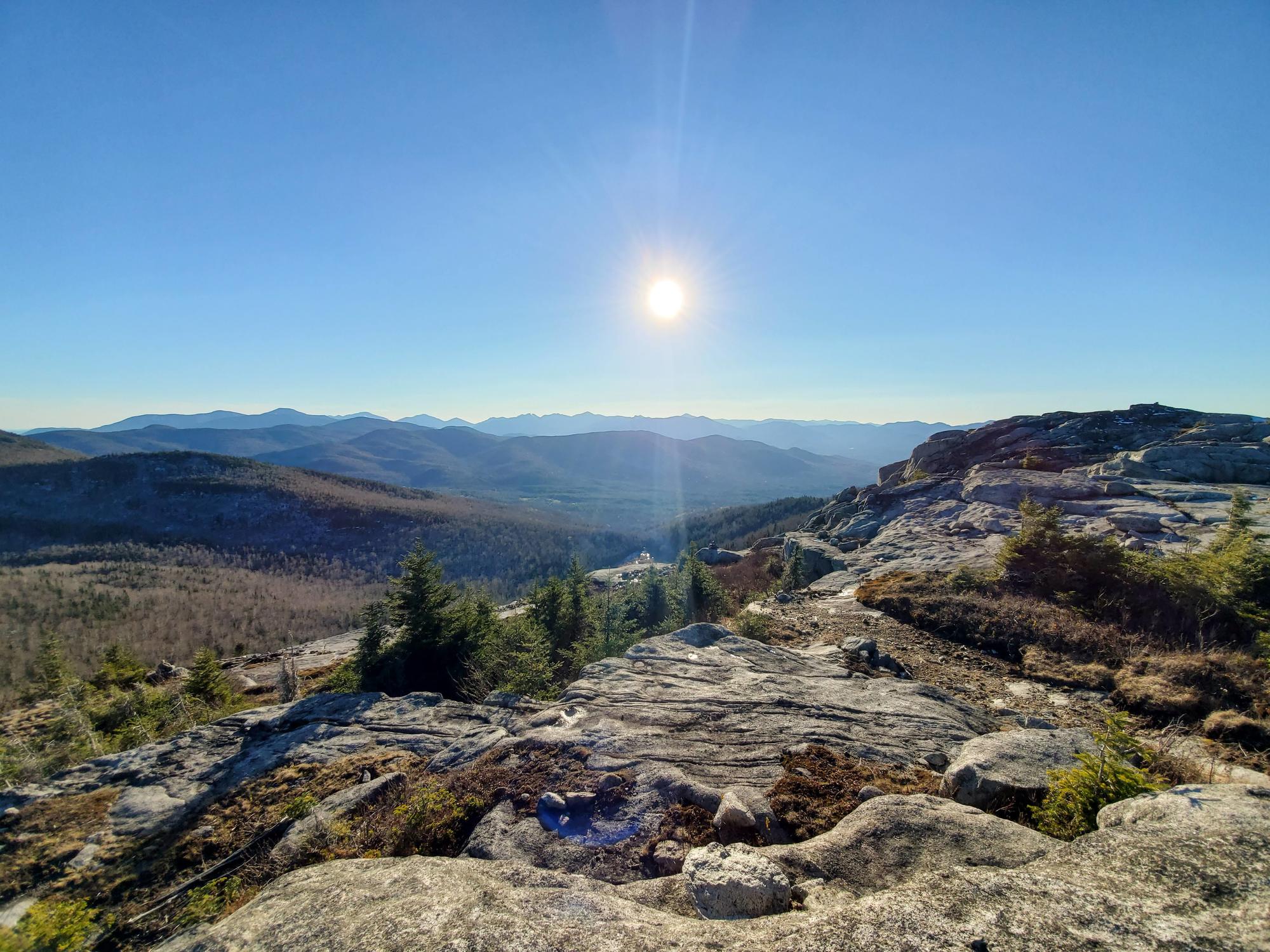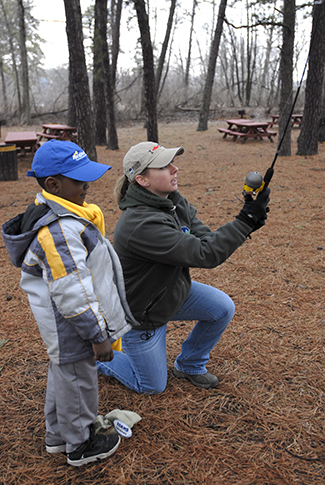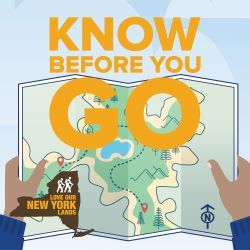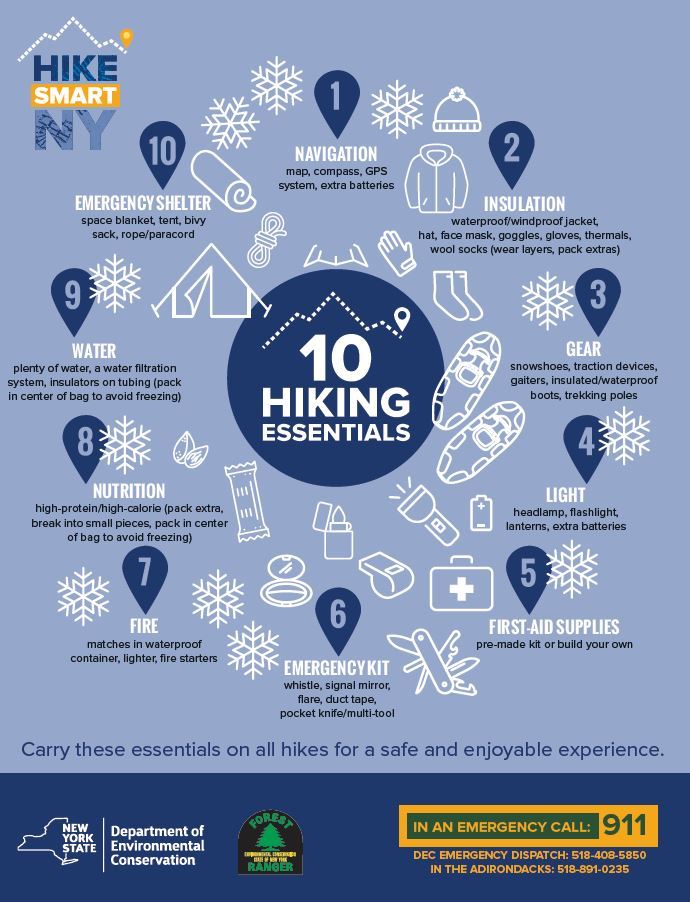DEC Adirondack Outdoor Recreation Bulletin - November 11, 2021
The New York State Department of Environmental Conservation sent this bulletin on 11/11/2021 09:00 AM EST |
| DEC Delivers - Information to keep you connected and informed from the NYS Department of Environmental Conservation |
| Share or view as a web page || Update preferences or unsubscribe |
DEC Adirondack Outdoor Recreation BulletinNovember 11, 2021 |
|
Emergency Situations: If you get lost or injured; keep calm and stay put. If you have cell service, call 911 or the DEC Forest Ranger Emergency Dispatch, 833-NYS-RANGERS. Welcome to the Adirondacks. The Welcome to the Adirondacks webpage is the place to go if you are interested in learning more about the Adirondacks. It provides information about the Forest Preserve, conservation easement lands, outdoor recreation, and Leave No Trace. Love Our NY Lands: All New Yorkers and visitors should be able to access, enjoy, and feel welcome on state lands. These lands belong to all of us, our families, and our neighbors. While enjoying these shared spaces, be respectful of other visitors. Share trails, treat people with kindness, and leave things as you found them for others to enjoy. All of us have a responsibility to protect State lands for future generations. Learn more about how you can Love Our NY Lands. @NYSDECAlerts: Follow @NYSDECAlerts on Twitter for real-time updates to help you prepare. @NYSDECAlerts provides updates for DEC-managed lands throughout New York State, including the Adirondacks. Recreation Highlight: DEC Honors Veterans with Annual Free Fishing Day Today
New York is honoring veterans today with the sixth and final free fishing day of 2021. New York’s Free Fishing Days encourage more people to get outdoors to enjoy the state’s world-class fishing opportunities by waiving the fishing license requirement for residents and non-residents. What are you waiting for? It’s time to get fishing! To find an angling opportunity near you, visit the Places to Fish pages on DEC's website. To make the catch sweeter, DEC has increased fishing opportunities for anglers with the State’s new catch-and-release trout stream season. The new season, which began Oct. 16 and runs through March 31, expands opportunities for anglers so they can enjoy New York’s trout stream fishing resources year-round. Anglers are required to use only artificial lures and immediately release trout they catch. The catch-and-release season applies to trout streams only. Anglers should consult DEC’s regulations guide for regulations associated with lakes and ponds that harbor trout before fishing and check out the Interactive Trout Stream Fishing Map on DECinfo Locator. Free Fishing Day participants are reminded that, although the requirement for a fishing license is waived during Free Fishing Days, all other fishing regulations remain in effect. When not participating in Free Fishing Days, anyone 16 years of age or older must have a current State fishing license to fish in New York. Recent NoticesThe following are the most recent notices pertaining to public lands in the Adirondacks. Please check the Adirondack Backcountry Information webpages for comprehensive and up-to-date information on seasonal road statuses, rock climbing closures, specific trail conditions, and other pertinent information. New: High Peaks Wilderness: The Flowed Lands lean-to (on the west side of Flowed Lands) will be unavailable until further notice. The closure is expected to last several months. Lean2Rescue is rehabilitating the lean-to. To date they have deconstructed the existing lean-to and installed a new foundation and base. The structure will be reassembled this winter. The Calamity and Griffin lean-tos north and south of this location are available. Last Week: Otter Creek Horse Trails: The Otter Creek Horse Trail assembly area water is off. The facility remains open for day use and overnight camping. Siamese Pond Wilderness: A bridge closure on the Botheration Pond Trail will prevent users from completing the Botheration Loop. The bridge has been roped off. Please do not attempt to use it. General Notices
Visit the main Adirondack Backcountry Information page for more trip-planning resources, including travel information, weather resources, and seasonally-specific information about Adirondack recreation. Check the Weather: Check the forecast for your destination and pack and plan accordingly. Check the National Weather Service Northern Adirondacks and Southern Adirondacks Mountain Point Forecasts for select summit forecasts. Check both daytime and nighttime temperatures, and remember that temperatures will drop as you gain elevation. Check wind chill temperatures and prepare for colder, windier summits. Winter Conditions: Winter conditions are starting to appear throughout the Adirondacks, with snow and ice present on high summits. Be prepared with warm, waterproof layers, extra layers, and proper gear for snow and ice, including microspikes and crampons. Water Conditions: Water levels throughout the Adirondack region range from average to above average. Check the USGS Current Water Data for New York for stream flow of selected waters. Personal Flotation Devices (PFDs aka lifejackets) are required to be worn on all pleasure vessels less than 21 feet long between Nov. 1 and May 1. Where bridges are not available, do not attempt stream crossings during periods of high, fast-moving water. Wet and Muddy Trails: Wear waterproof shoes and walk through mud, not around it, to help protect fragile trail edges. Gaiters help keep feet dry and trekking poles provide added stability. Mountain bikers are encouraged to avoid riding in muddy and wet conditions as biking on wet trails can significantly contribute to erosion and trail widening. As with hiking, ride through the center of the trail to avoid impacting trailside soils and plants. Sharing the Woods During Hunting Season: Hunting and trapping seasons are underway throughout New York State. Recreationists and hunters alike have a responsibility to keep each other safe during hunting seasons. Dress in bright colors such as hunter orange, put bright colors and bells on pets and equipment and keep pets leashed to discourage roaming. Interfering with or harassing hunters or trappers is illegal. Visit DEC’s website for more safety tips. Bear Canisters Required: NYSDEC requires the use of bear-resistant canisters by overnight users in the Eastern High Peaks Wilderness between April 1 and November 30. NYSDEC encourages campers to use bear-resistant canisters throughout the Adirondack backcountry. Bear canisters should be used to store all food, food garbage, toiletries, and other items with a scent. Canisters should be stored a minimum of 100ft from tents, lean-tos and cooking sites and kept closed whenever they are not being accessed. Learn more about bear canisters and avoiding human-bear conflicts. Ticks: Ticks may still be present despite colder temperatures. Wear light-colored clothing with a tight weave to spot ticks easily. Tuck pant legs into socks or boots and shirt into pants. Check clothes and any exposed skin frequently for ticks while outdoors. Consider using insect repellent. Stay on cleared, well-traveled trails and walk in the center of trails. Avoid dense woods and bushy areas. Additional tips for tick prevention. Safety & Education
Don’t Get Left in the Dark Daylight savings time and the earlier sunset that comes with it catches a few people off guard every year. Forest Rangers in the Adirondacks responded to several incidents this past weekend where people found themselves on the trail after dark without adequate light. Don’t get left in the dark – follow these tips:
Leave No Trace
Follow the Seven Principles of Leave No Trace to maintain minimal impact on the environment and the natural resources of the Adirondacks. Use proper trail etiquette to ensure an enjoyable experience for yourself and others, and tread lightly! Leave No Trace and Cairns Cairns (a Gaelic word for “heap of stones”) are intentionally constructed stacks of rocks that mark trails and guide hikers in the mountains above tree-line and in other barren areas. Cairns are very important guides for hikers during periods of low visibility and in winter when snow covers the trail. They can also serve as a resource protection tool for the alpine landscape. By adhering to the following guidelines, you can minimize impact on cairns and ensure that cairns continue to serve as a critical route-finding tool for trail users and resource protection tool for the alpine landscape.
|

 This bulletin provides only the most recent notices. Check the
This bulletin provides only the most recent notices. Check the 

 Fall recreation is fun and exciting. It can also be challenging and dangerous. Whether you’re going for a hike, a bike, a paddle, or fishing,
Fall recreation is fun and exciting. It can also be challenging and dangerous. Whether you’re going for a hike, a bike, a paddle, or fishing, 